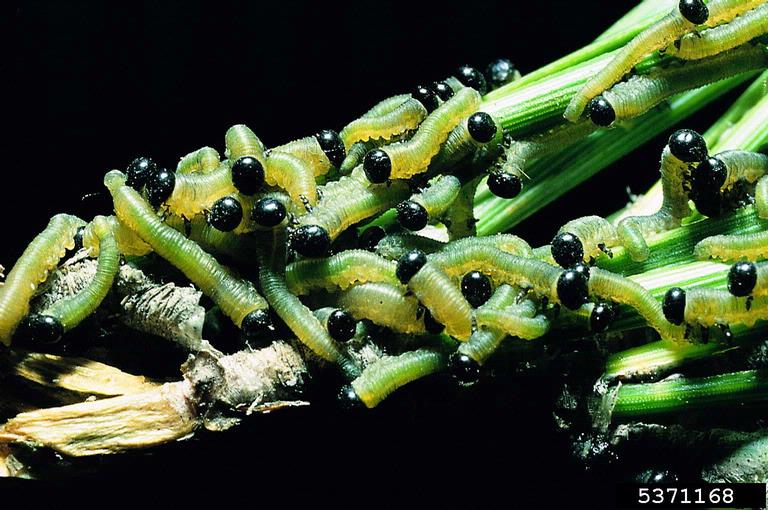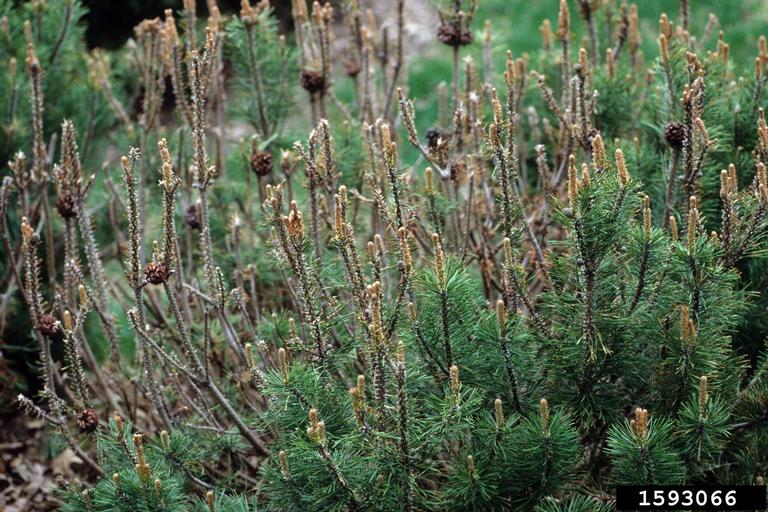Integrated Pest Management
European Pine Sawfly
Neodiprion sertifer
Pest Description
- adults: 1/3 inch; males are mostly black with feathery antennae; females are reddish brown
- larvae: caterpillarlike and ~ 1 inch; green body with white, green and gray/black stripes; shiny black head
- larvae will rear their heads when disturbed
Host Plants, Diet & Damage
- mugo pine; other pine species
- prefer to consume older needles from tip to base
- larvae often feed in groups
- brown scars on needles where eggs have been inserted
Biology, Life Cycle & Damaging Life Stage
- overwinter as eggs inside needles
- eggs hatch in mid-spring and larvae feed on old needles
- pupate on host bark or around the host in early to mid-summer
- adults emerge in late summer to mate and lay eggs in needles
- one generation per year
- larvae are the primary damaging stage
IPM Recommendations
- Manage trees to improve or maintain health.
- Monitor in fall through early spring for egg-laying scars on needles and in the spring for damage to old needles and larvae (late-April to early-May).
- Low-level infestations can be tolerated.
- Wash larvae off with a strong spray of water.
- Spot-treat young larvae with an insecticide (azadirachtin; horticultural oil; insecticidal soap; organophosphate; pyrethroid; spinosyn) when monitoring indicates their presence.




